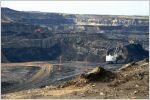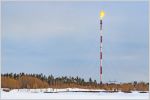
Shell Oil refinery in Hemmingstedt, Dithmarschen, Germany in summer. Photo: Dirk Ingo Franke via Wikimedia Commons CC BY-SA 2.0
Two narratives about oil and gas methane are fighting for dominance in Canada. The first is a success narrative that says Canada, its provinces, and its oil and gas producers are hitting 40-45% reduction targets years ahead of schedule. The second is a more skeptical narrative that highlights persistent underestimation and underreporting.
In just the most recent example of these clashing narratives, the Alberta government recently announced that it achieved its target of a 45% reduction from 2014 levels two years ahead of schedule. The announcement came just one week after a peer-reviewed academic study was published showing Alberta’s methane emissions are underestimated by 50%. This calls into question how much progress has been made. It also raises doubts about the utility of relative reduction targets when baselines are unknown. This study is the latest in a series of studies that show oil and gas methane in Canada (and internationally) is significantly underestimated and underreported.
As we noted in Part 1 of this series, reducing methane emissions from oil and gas is now an international priority. Yet setting meaningful targets, developing sound policies, evaluating outcomes, and credibly telling success stories requires a still largely missing piece: comprehensive measurement data.
But things are starting to change. Governments, research groups, and voluntary initiatives are improving methane inventories through measurement, leveraging a wide variety of technologies, pools of expertise, policies, and protocols.
Measurement technologies
Handheld: Instruments such as optical gas imaging (OGI) cameras and point analyzers (“Method 21”) deployed by individuals on the ground, providing detailed, close-range component-level data.
Vehicle: Mobile ground labs equipped with sensors sample methane concentration while driving, providing detailed site-level data.
Drone: Drones allow operators to sample methane concentrations from the ground, while accessing hard-to-reach areas, achieving better quantification of emissions from elevated sources.
Aircraft: A variety of sensing technologies can be mounted on aircraft, enabling fast and comprehensive site- and region-level surveys.
Satellite: Satellites such as TROPOMI, MethaneSAT, and GHGSat determine methane concentrations from space, using sensors that detect reflected sunlight, enabling extensive international monitoring for large emitter events.
Continuous: Sensors permanently situated at facilities collect data continuously, aiding the detection of intermittent and unpredictable leaks.
Methane measurement is advancing
Government of Canada: Environment and Climate Change Canada is gradually incorporating more measurement data into its national inventory. One of the pathways to regulatory compliance in the proposed amendments to the federal methane regulations integrates continuous monitoring. The federal government has also announced $30 million in funding for a much-needed Methane Centre of Excellence that will advance measurement and enable the collection and analysis of measurement data.
B.C.-UNEP collaboration: Through the Methane Emissions Research Collaborative (MERC), the B.C. government conducted the first site-level aerial measurements in 2019. It is now in a multi-year partnership with the United Nations Environment Programme (UNEP) to continue this work. The B.C. Energy Regulator has shown leadership by integrating the aerial survey data into its modeling and policy development as it works to strengthen its oil and gas methane regulations.
U.S. EPA: The U.S. EPA recently proposed updates to its Greenhouse Gas Reporting Program Subpart W. Effective January 1, 2025, the updated rules will cover a wider array of sources and industry segments, amend calculation methods, incorporate more empirical data, and enable improved accuracy and data verification.
EU: The EU’s provisional agreement on energy sector methane significantly strengthens measurement, monitoring, reporting, and verification requirements by requiring a shift from estimates to direct measurement of asset-level methane emissions at source, with a requirement for independent verification – including verification by the International Methane Emissions Observatory.
Carleton University’s Energy & Emissions Research Lab and St. Francis Xavier University’s FluxLab: Canada’s leading methane measurement labs are advancing measurement and quantification methods and gathering vital data using a range of ground- and air-based tools. Researchers at these labs continue to publish studies showing that methane emissions are significantly underestimated and underreported across Canada’s oil and gas producing regions.
Energy Emissions Modeling and Data Lab (EEMDL): The University of Texas at Austin, Colorado State University, and the Colorado School of Mines are jointly leading several projects to improve methane data, including one to develop a U.S. methane census. The projects are sponsored by oil and gas companies including Cheniere, EQT, and Williams, who have provided US$50 million worth of funding.
The Oil and Gas Methane Partnership (OGMP) 2.0: Led by UNEP, OGMP 2.0 is a comprehensive, measurement-based international reporting framework for oil and gas methane emissions. The EU designed its recent methane emissions regulations around OGMP 2.0, requiring duty holders to submit source- and site-level measurements.
MiQ: The MiQ Standard is a natural gas certification that integrates facility- and source-level surveys by independent auditors to determine methane intensity. In June 2023, MiQ and Highwood Emissions Management published the first open-access, measurement-informed methane intensity index for the U.S. natural gas sector.
Veritas: In December, U.S.-based organization GTI Energy released its updated “Veritas” protocols for measuring methane emissions along the natural gas value chain. The aim of the protocols is to enable "credible, consistent, and comparable" measurement. GTI Energy is also developing a pathway to meet OGMP 2.0’s measurement requirements.
Opportunities for further action
While Canada’s gradual integration of measurement data into the national inventory signifies progress, more work is needed to improve the national inventory. Canada should build strong measurement requirements into its oil and gas methane regulations, strengthen its greenhouse gas reporting program, and further revise its inventory methods to be more data-driven. It should likewise engage in robust stakeholder engagement to ensure the Centre of Excellence is designed conscientiously, in a way that leverages Canada’s considerable pool of expertise, as well as the lessons from existing data-collection efforts.
Canadian oil and gas companies can demonstrate leadership by setting ambitious methane reduction targets and developing concrete, actionable plans to meet them. Moreover, as the fourth largest crude oil and fifth largest natural gas producing industry in the world, Canada’s oil and gas industry should participate far more in voluntary initiatives to measure, quantify, disclose, and reduce methane emissions. Credibly demonstrating methane reductions will be key to continued competitiveness as demand shifts toward low-carbon energy options. OGMP 2.0 now has 120 member companies based in 70 countries, but has only recently announced the first participating company based in Canada. MiQ now certifies more than 20% of gas produced in the U.S., but none of the gas produced in Canada.
Finally, Canada has a vibrant, leading-edge academic research space for methane measurement. Further partnerships with researchers are needed to foster continued valuable insights.
To truly earn the methane success story and tell it credibly, governments and industry must build on existing efforts to provide the missing measurement piece.
Amanda is a senior analyst with the Pembina Institute's oil and gas program, specializing in methane research. She is based in Calgary.



